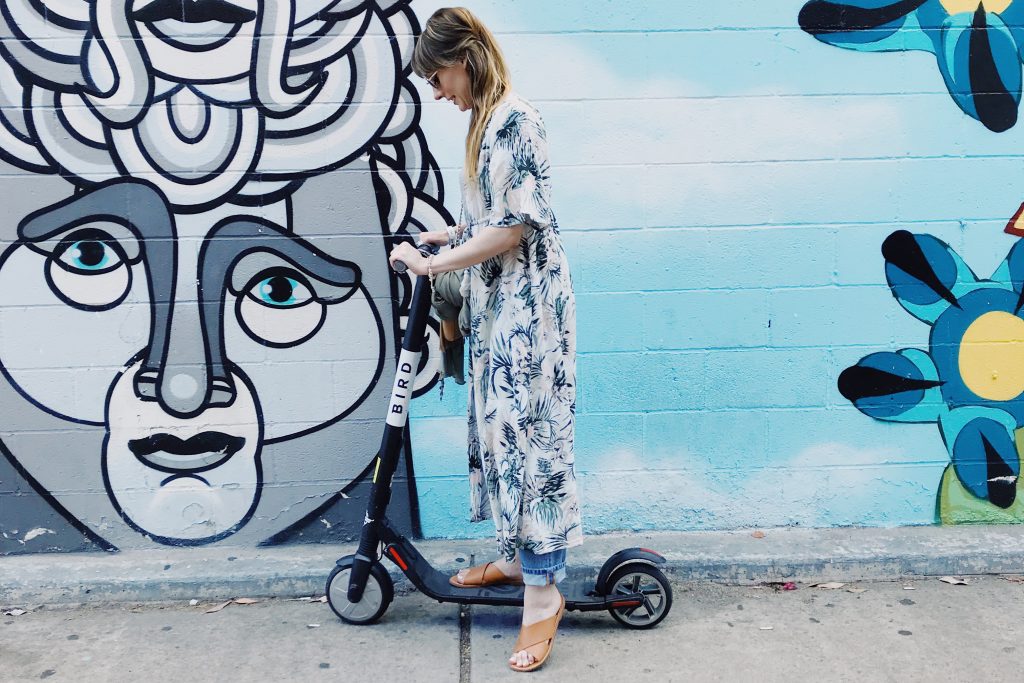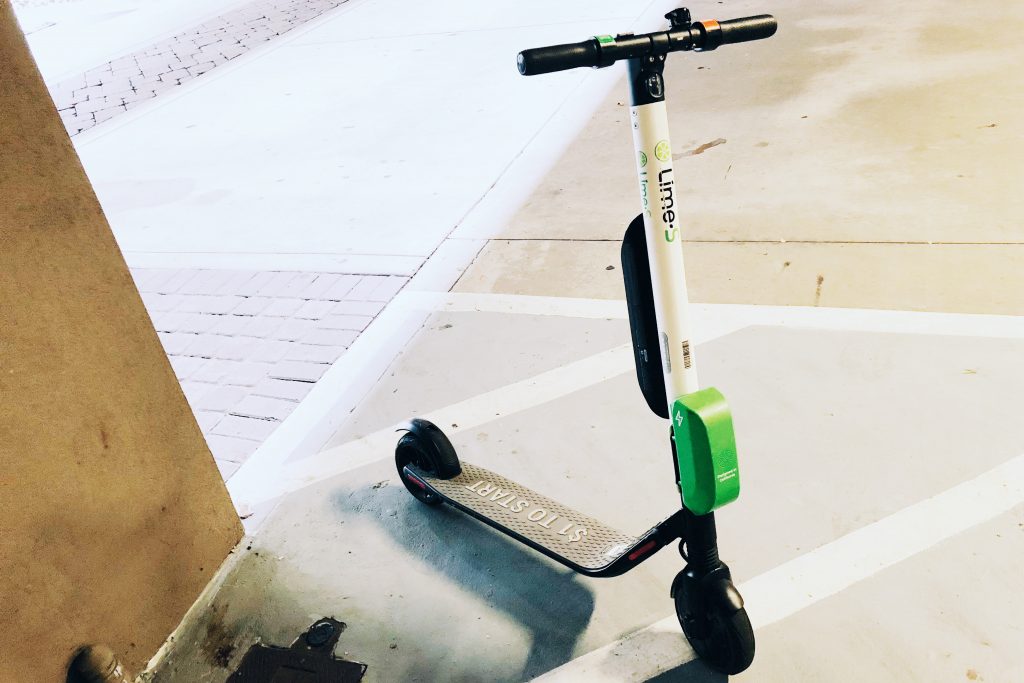Invasion of the Birds
Are electric scooters a safe alternative travel method?

If you’ve spent at least 30 seconds outside campus recently in the surrounding Midtown area you’ve probably seen, driven or been nearly run over by an electric scooter. These ubiquitous close encounters of the Bird kind are becoming commonplace in Atlanta and throughout cities across the United States. But the Hitchcock-like invasion of the Birds (and Limes) has some pedestrians, drivers and riders concerned about safety.
Although the dockless e-scooters are a quick, cheap, environmentally friendly and fun way to get around in a city like Atlanta, known for excessive traffic and commute times, some cities and residents are calling Birds, and other e-scooters, foes rather than friends. After spending the summer in Los Angeles (the birthplace of Bird) I saw first-hand the rise and takeover of this emerging alternative transportation method, and its causes for concern.
Bird, one of the first scooter-share companies to market, was founded by Travis Vanderzanden who was formerly the COO of Lyft and later a VP of growth at Uber. No stranger to alternative transportation, Vanderzanden, as well as his competitors, are faced with unique challenges that are causing some cities, including Santa Monica (home to Bird headquarters), to temporarily ban or prohibit the scooters.
The scooters cost a mere $1 to unlock and then $0.15 per minute. You need a smartphone, a driver’s license and a credit card to operate the scooter, plus your own helmet. Scooters can go up to 15 mph and can travel about 15 miles per charge. They are dockless, so you can park them wherever you finish riding.

The nature of these scooters makes it difficult for riders, pedestrians and drivers to discern exactly what rules apply. As motor vehicles, do the scooters behave like cars and motorcycles? Or do they follow pedestrian rules as they cannot reach speeds that come close to keeping up with moving traffic?
Despite rules and safety regulations listed on Bird’s website and app, policies are treated more like guidelines as there appears to be little done to enforce them. Technically, Bird scooters, and the like, are not allowed on pedestrian sidewalks. Riders must ride in a bicycle lane where available or on the street. And according to the Bird website, scooters are not to be parked in sidewalks, driveways, or in the pedestrian right-of-way. Where possible they are to be parked close to a curb or near designated bike racks. Helmets are required, and Bird will send riders a free one less shipping costs. Furthermore, riders must be at least 18 years old with a valid driver’s license. Only one rider at a time is permitted, and scooters are to follow all traffic rules and laws including street signs and stop signs.
If you laughed out loud after reading these so-called rules, you are surely not alone. It is far from uncommon to see scooters whizzing past pedestrians on sidewalks, nearly clipping them in their wake while avoiding any semblance of traffic safety. I don’t think I have ever seen anyone with a helmet. And unless there are a lot of Benjamin Button’s running around, I have definitely seen children buzzing by me at alarming speeds.
Nimaanee Narang, a luxury and fashion management graduate student, said she thinks the scooters are getting out of hand. “It’s ridiculous,” she said. “Every time I see one I’m like someone is gonna get hurt.”
Susana Galindo, also a luxury and fashion management graduate student, thinks despite safety concerns, the scooters are here to stay for the long haul, much like the rideshare bikes many cities have installed. “It’s a cheap alternative to Uber, and it’s quick,” she said. “I almost used one the other day, but I didn’t have my phone with me.” But when asked if she knew about some of the rules and regulations, she was surprised to hear some of them. She was especially shocked to learn that riders are required to be 18 years old. “I see kids on them all the time,” she said.
Don’t get me wrong, I’m not trying to be a kill-joy. The scooters are a quick, easy, environmentally friendly, not to mention fun, way to buzz around town. But we must seriously ask ourselves how safe these scooters are for riders and pedestrians alike, and what we can do to ensure everyone’s safety as more and more scooters infiltrate the streets.
Riders must remember that drivers are not yet accustomed to look out for scooters. This is why it is important for riders to follow traffic regulations and assume that drivers probably aren’t looking out for them and maybe don’t see them. Riders must remember that these scooters, as fun as they are, are not toys. It’s imperative that both sides be courteous.
Although these scooters are dockless, that doesn’t give riders the OK to litter the sidewalks with them, drop them wherever they feel like, or ride recklessly on pedestrian sidewalks. And drivers need to understand that this mode of transportation is growing, and to learn to be alert and aware of scooters and share the road.


























